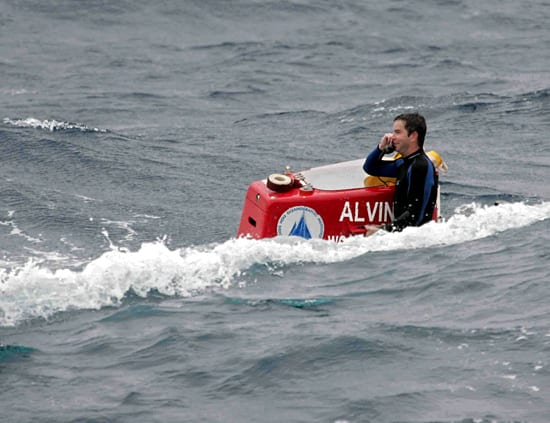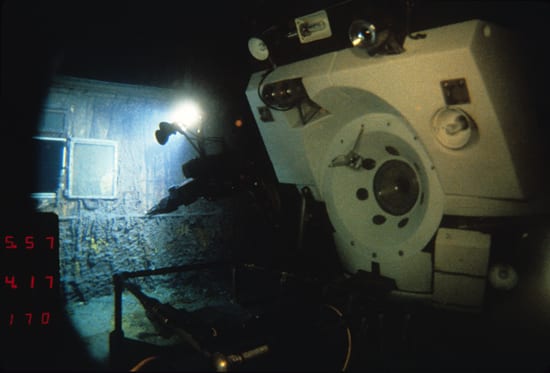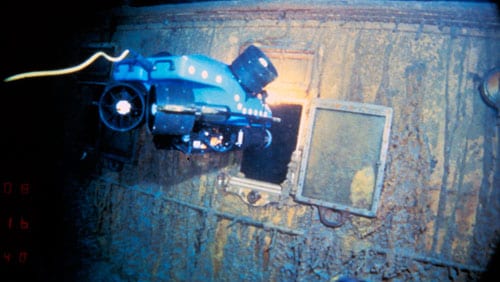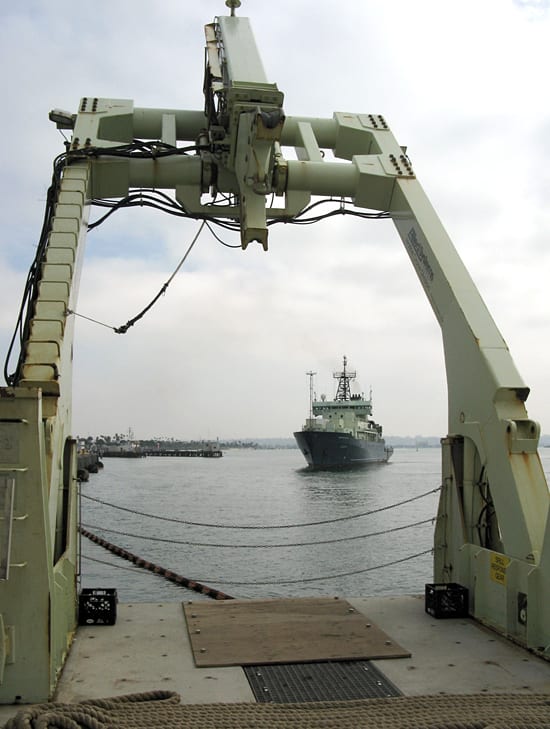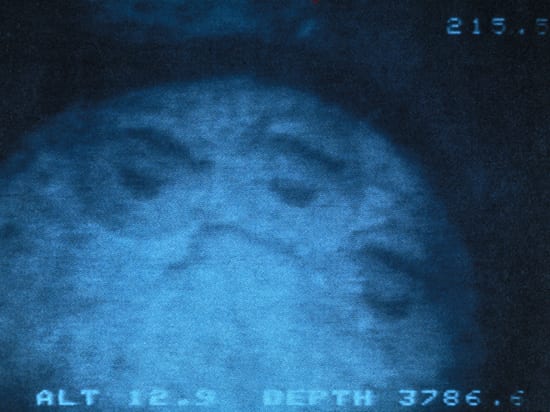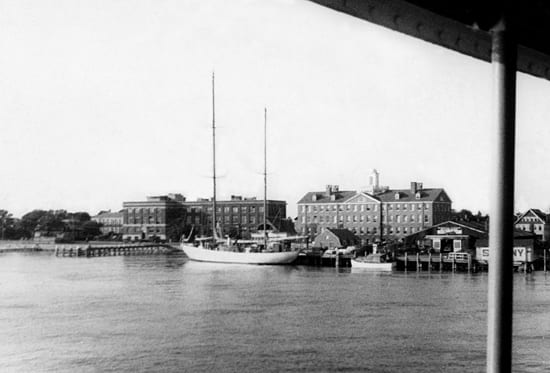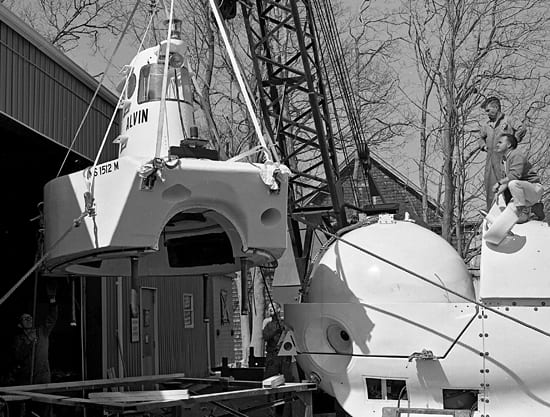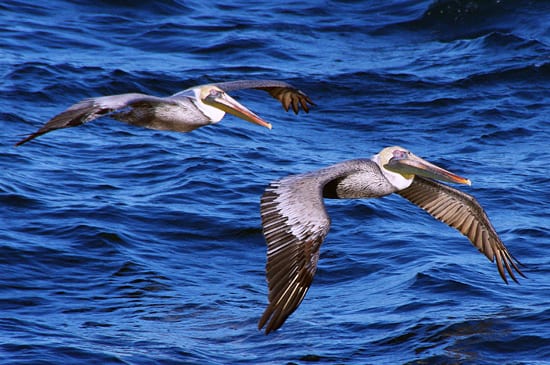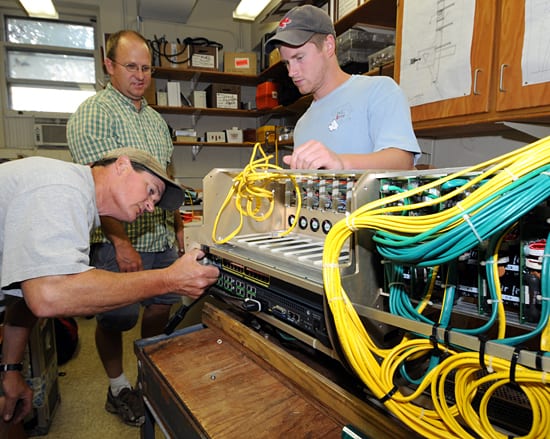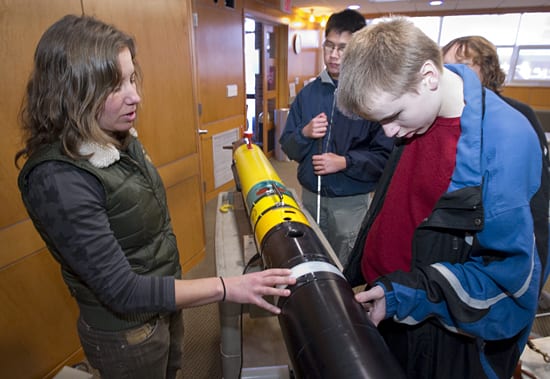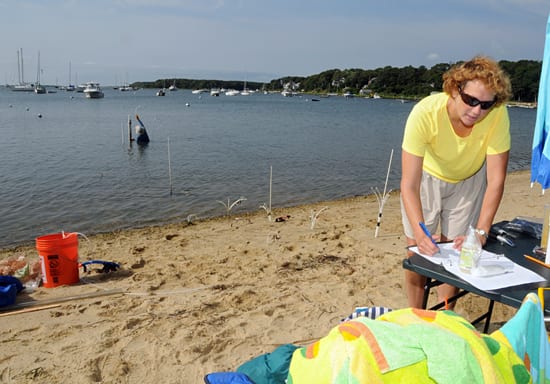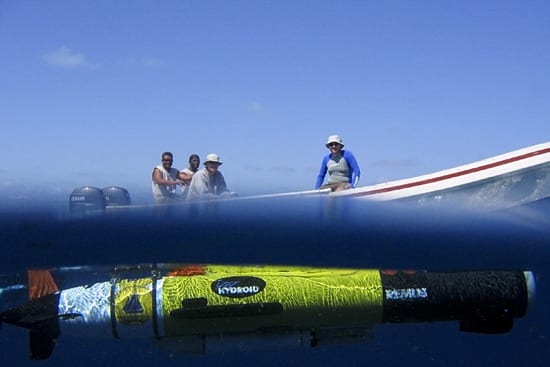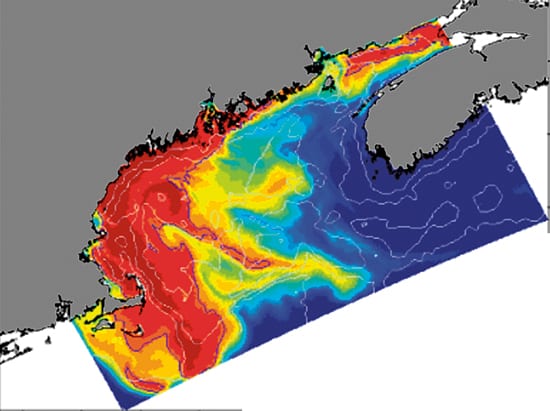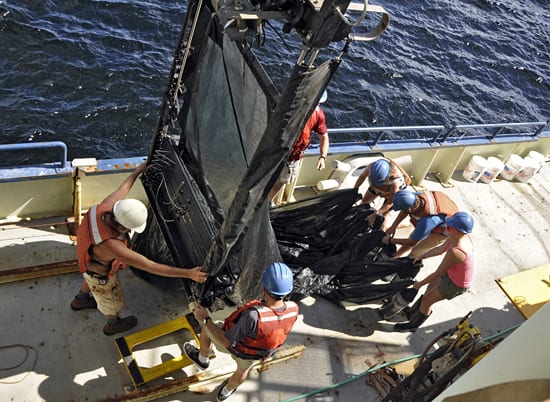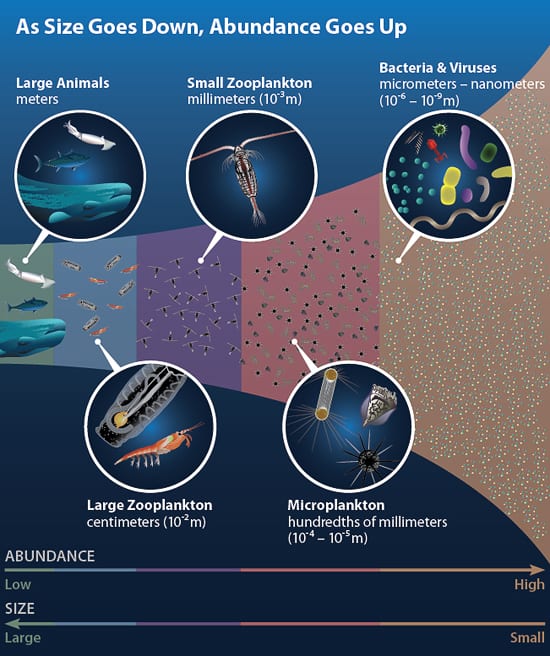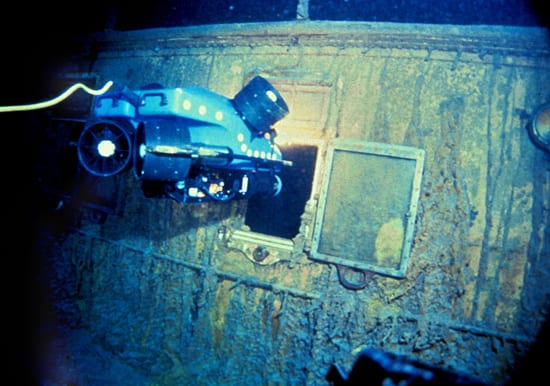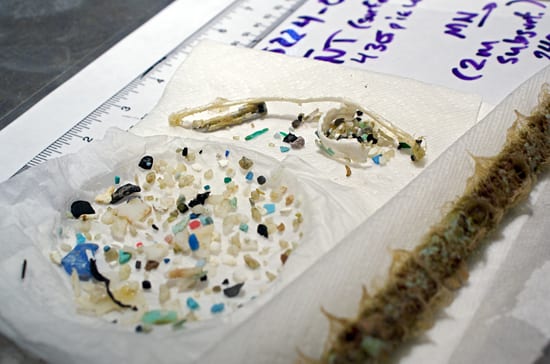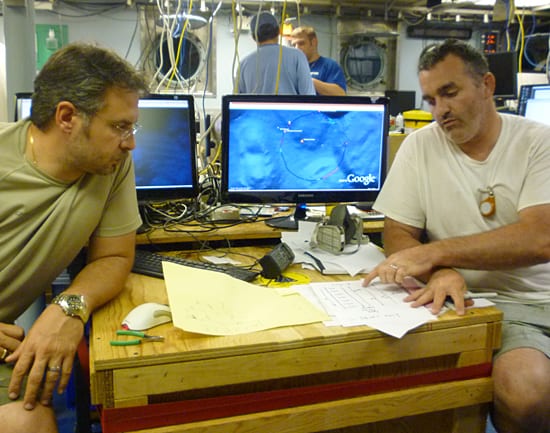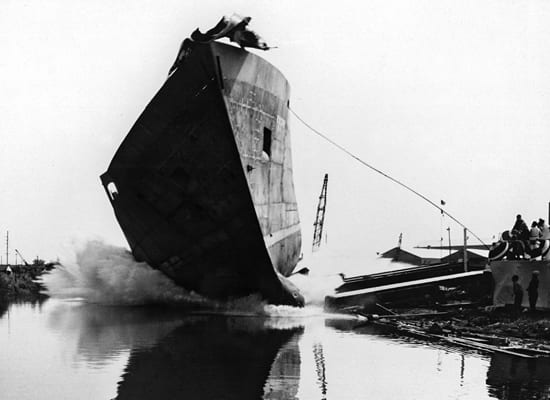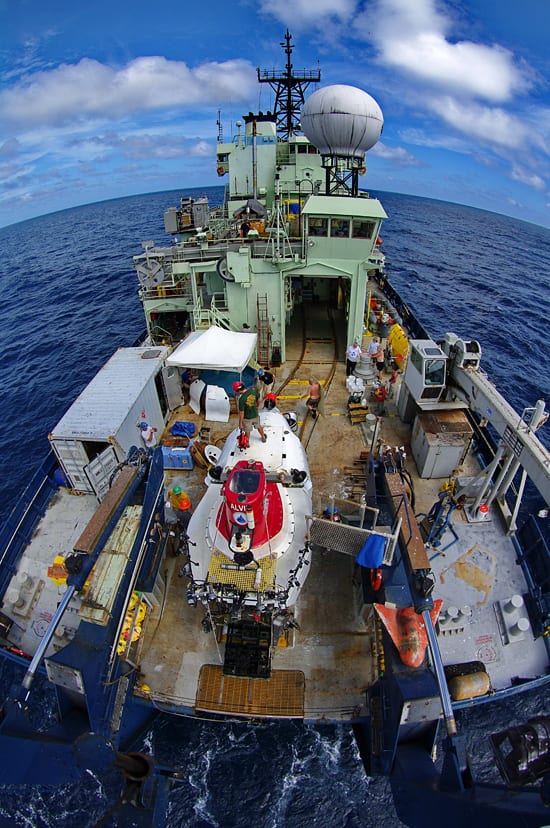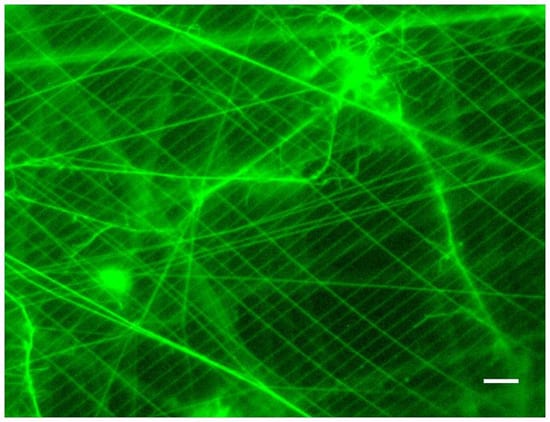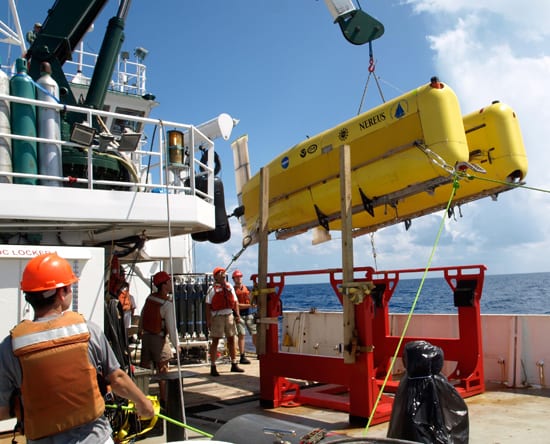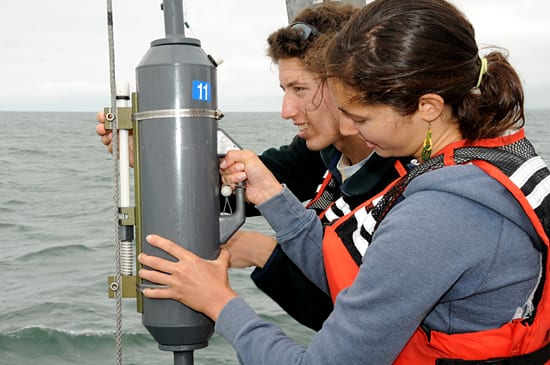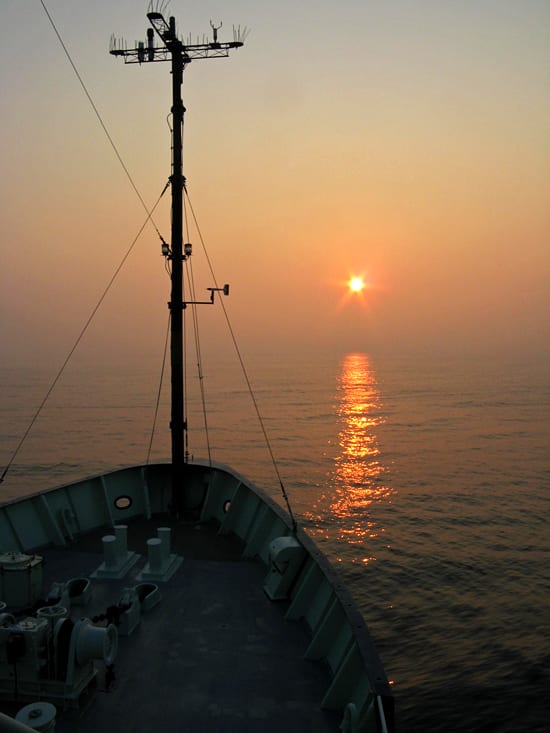Multimedia Items
Almost Home
Ordinary seaman, and occasional Alvin support swimmer, Ronald Whims, relays directions to Alvin’s pilot and helps guide the submersible into position for recovery by the research vessel Atlantis during a…
Read MoreRMS Titanic, Meet DSV Alvin
The wreckage of RMS Titanic was discovered on the seafloor 25 years ago this week. A year later, a WHOI-led expedition returned with the deep-sea vehicle Alvin and Jason Jr.,…
Read MoreA Titanic Tale
Two Ships Pass
In 2009, R/V Knorr and Atlantis crossed paths in San Diego. They barely missed reuniting again in Woods Hole recently—Knorr left last weekend for Greenland while Atlantis arrives over the…
Read MoreLooking Back: 25 Years Ago Today
The first evidence that researchers aboard the R/V Knorr had found the RMS Titanic came on September 1, 1985, from this mundane-looking photo of what turned out to be one…
Read MoreNew Kid on the Block
On Aug. 31, 1931, WHOI’s first deep-ocean research vessel Atlantis arrived in Woods Hole for the first time. The 142-foot, steel-hulled ship was the first built for the U.S. specifically…
Read MorePutting Alvin Together Again
Every few years, the research sub Alvin is completely overhauled. Here, Alvin is reassembled during its first major refit in 1967. The crew included chief mechanic George Gibson (standing on…
Read MoreFlying escorts
Alvin pilot Mark Spear photographed two brown pelicans escorting R/V Atlantis from Puerto Caldera, Costa Rica after taking on fuel and loading science equipment in January. The largest of the…
Read MoreMaintaining Ocean Vision
At WHOI’s Martha’s Vineyard Coastal Observatory (MVCO), Jay Sisson, Hugh Popenoe, and Jared Schwartz (left to right) switch out part of a “node,” a device that connects several ocean-monitoring instruments.…
Read MoreHands-on Ocean Science
Engineering technician Amy Kukulya describes one of WHOI’s REMUS robotic vehicles to two students (Garret, foreground, and Kenny, left) from the Perkins School for the Blind in Watertown, Mass. WHOI…
Read MoreDouble Check
At Cape Cod’s Waquoit Bay National Estuarine Research Reserve, 2010 Summer Student Fellow Cristin Luttazi records data as WHOI associate scientist Ann Mulligan (in the water) measures water level, temperature,…
Read MoreTaking a Closer Look
A REMUS autonomous underwater vehicle is released at Glover’s Reef Marine Reserve in Belize as crew members Faegon Villanueva and Tyrone Lambert and WHOI researchers Glen Gawarkiewicz and Harvey Walsh…
Read MoreHarmful Algae & Red Tide Research
WHOI scientists Dennis McGillicuddy and Ruoying He created a computer simulation of the historic 2005 toxic algae bloom in New England. Red denotes high algae concentrations; blue the lowest. Algal cells germinated from cyst beds in the Bay of Fundy and along the Maine coast. They were swept south and west by currents. McGillicuddy and He entered a range of factors into their model: the speeds and directions of ocean currents, water temperature and salinity, winds, surface heat exchanges, tides, river runoff, and the distribution and behavior of cells in the water and in seafloor sediments. (Data visualization by Ruoying He and Dennis McGillicuddy, Woods Hole Oceanographic Institution)
Read MoreMultiple Hands for a Multiple Net
Problem: how to find small drifting animals (zooplankton) in the ocean. Solution: tow a net to catch them. Bigger problem: how to determine which animals live at what depth without…
Read MoreSizing Up Sea Life
The ocean is full of life—most of it too small for us to see. Marine life ranges from bacteria and viruses, at nanometer scales (10-9m), to whales and other very…
Read MoreExpedition Titanic 2010
In 1985, a WHOI-led team discovered the site of the most fabled shipwreck in history—the RMS Titanic. In 1986, a group returned to examine the wreck in more detail (above).…
Read MoreAn Ocean Full of Plastic
For more than 20 years, scientists and students from the Sea Education Association (SEA) in Woods Hole have been sailing to the same region of the Atlantic Ocean to study…
Read MoreTracing Hydrocarbon Plumes in the Gulf
Yesterday, WHOI researchers Rich Camilli (left), Christopher Reddy (right), and others released a paper in the journal Science describing a deep plume of hydrocarbons they discovered in the Gulf of…
Read MoreKnorr: 42 Years Young
On August 21, 1968, the hull of the R/V Knorr first entered the water in Bay City, Michigan, and has since traveled more than one million miles in the service…
Read MoreHomeward Bound
The end of a cruise with the deep-sea submersible (DSV) Alvin can be almost as busy as the middle. This photo, taken on April 13, 2010 after dive #4618, shows…
Read MoreSalps take a bite out of CO2
Intersecting strands of a salp‘s feeding net glow green, dyed with a fluorescent dye. Salps, jelly-like ocean animals, make nets of mucus and use them to efficiently filter particles from…
Read MoreNo room for error
Casey Machado, Daniel Gomez-Ibanez, Andy Bowen, and James Kinsey carefully lower the new hybrid underwater robotic vehicle Nereus into place in its cradle on the deck of the R/V Cape…
Read MoreWater, water everywhere
2010 WHOI Summer Student Fellows Jacob Izraelevitz and Isabella Arzeno deploy a water sampling bottle from R/V Tioga during the annual expedition on which Student Fellows learn oceanographic sampling and…
Read MoreSunrise, sunset
A beautiful sunset off the bow of R/V Oceanus during a cruise in June 2008. A science team aboard the Oceanus will head to the Gulf of Mexico in late…
Read More
